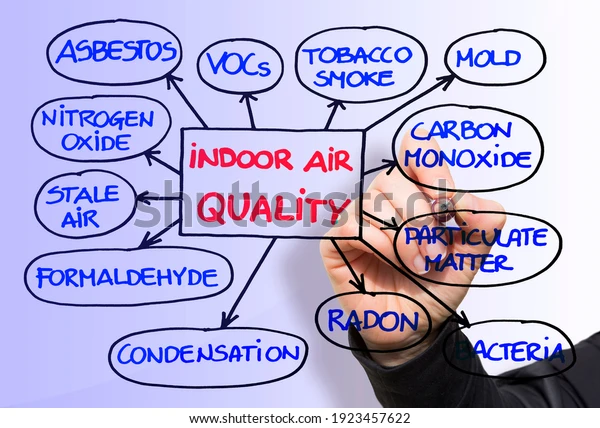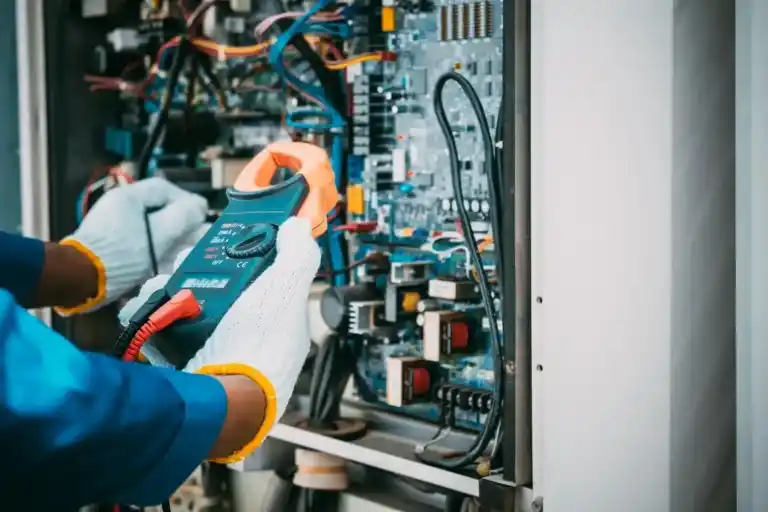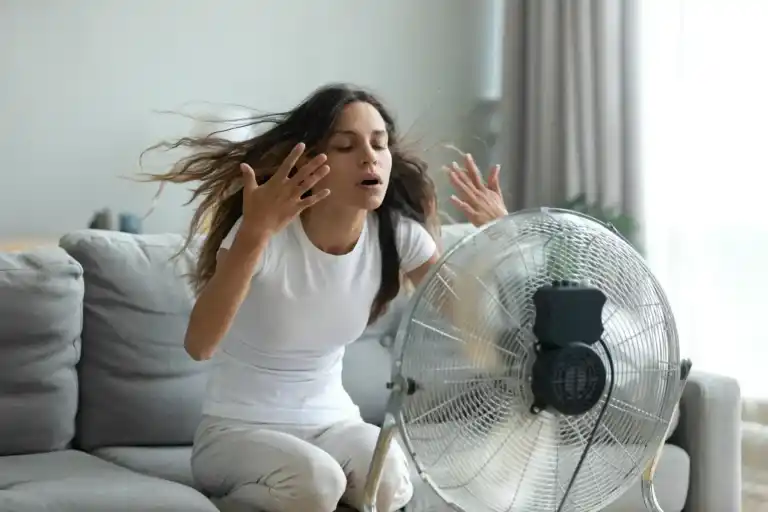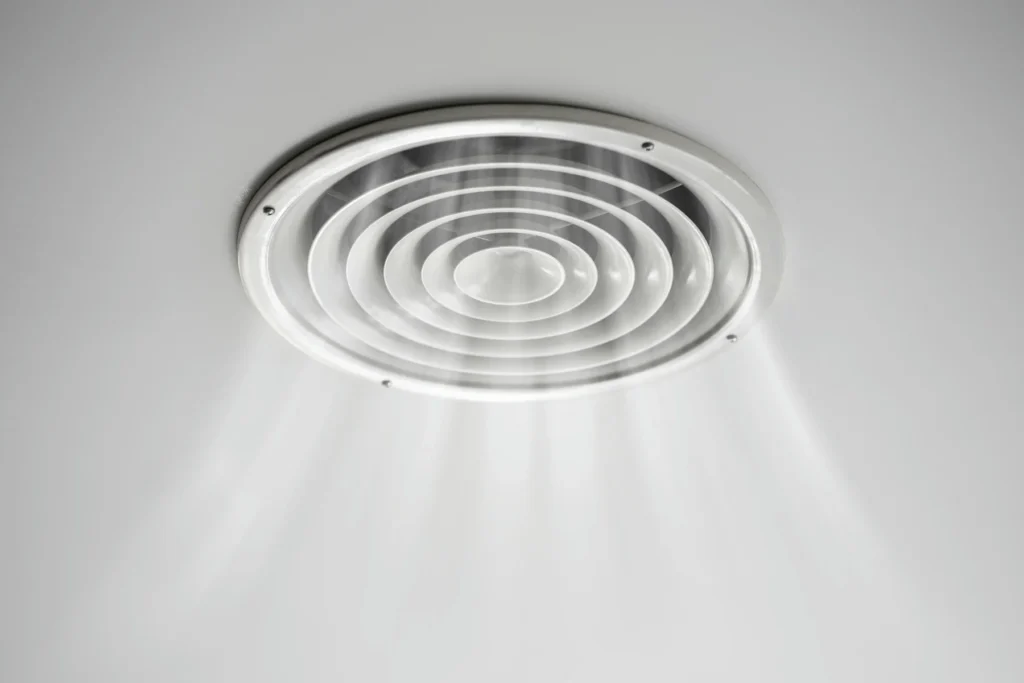Beat the Heat with Fast, Reliable & Professional AC Repair



It was a blistering August afternoon when Sarah Thompson realized something had to change. The temperature had soared to an unbearable 95°F, and inside her two-bedroom house, it felt like the air was thick with heat. The old box fans in the living room and bedroom did their best to move the air around, but it only seemed to push the warm air around in circles.
Sarah wiped the sweat from her brow and looked at her crumbling window AC unit. It had been sputtering for months, barely cooling the room, and now it was just a noisy, inefficient nuisance. She sat down on her couch, feeling the heavy air cling to her skin, and thought about how much she had endured over the years. The summer heat had become more than just a discomfort; it was starting to feel like a constant presence, always there, draining her energy and making it hard to relax in her own home.
The thought of central air had crossed her mind before, but it always seemed like a luxury she couldn’t afford. She was a teacher, and the expenses of maintaining her old house had piled up over the years. Sarah grabbed her phone and called Fast HVAC. She explained her situation to the technician, a friendly voice on the other end, who reassured her that central air might be more affordable than she thought, especially with financing options available.
By the next afternoon, a technician arrived at her house to assess the situation. He took a quick look at her outdated system, ran a few calculations, and gave her a quote. To Sarah’s surprise, the price was reasonable, and the technician promised the installation could be done within a few days. Sarah hesitated for only a moment before saying, “Let’s do it.”
A few days later, the work began. Technicians arrived early in the morning, hauling in equipment and installing ductwork. Sarah watched from the kitchen as the professionals moved efficiently, their skills evident in every step. By the afternoon, the system was in place, and the cool air began to flow from the vents.
The following days were a dream. The house was cool and comfortable, and Sarah could finally relax without the constant buzz of the window units or the sticky heat. As she sat on her couch with a book, a chilled glass of lemonade beside her, she couldn’t help but feel proud of her choice.
In the end, it wasn’t just about the comfort—though that was certainly a huge bonus—it was about the peace of mind knowing she had made a decision that would improve her quality of life, one cool breeze at a time with Fast HVAC.
Homeowners often decide to purchase a central air conditioning system for several reasons, all of which revolve around comfort, convenience, and long-term value. Here are some common reasons why people make the decision to install central air:
One of the biggest draws of central air conditioning is the ability to maintain a consistent temperature throughout the home. Unlike window units or fans, which often provide uneven cooling, central air ensures that every room stays comfortable.
Central air systems often come with filtration systems that remove dust, pollen, and other allergens from the air, making it a good choice for people with allergies or respiratory issues.
Modern central air conditioners are more energy-efficient than older window units or portable air conditioners. By cooling an entire home with one system, homeowners save on electricity costs over time. In addition, central systems allow for better zoning, which can reduce cooling costs by only conditioning the rooms being used.
Installing central air conditioning increases the resale value of a home. For those planning to sell in the future, having central air could provides an edge in the market.
Central air systems are much quieter than window units. Window AC units are noisy and disruptive, but central air is much quieter, with the compressor located outside the home, making it ideal for maintaining a peaceful living environment.
With central air, homeowners can control the temperature of the entire house using one thermostat, which is much easier than adjusting multiple window units or portable ACs.
Window air conditioners are bulky and obstruct views, while central air is discreet and invisible, with ducts and vents integrated into the structure of the home.
For larger homes or homes with multiple stories, central air conditioning is more efficient at cooling the entire space than individual room units.
Homeowners in warmer climates often opt for central air as a way to stay cool during prolonged heatwaves and to create a more livable environment year-round.
These factors, combined with the growing need for home comfort and energy efficiency, lead many homeowners to opt for central air conditioning systems to improve their living conditions.
Before the heat of another Puget Sound season sets in, contact Fast HVAC. Though the design has been around for quite a while, and newer methods are available, central air conditioning remains at the top of the market in terms of popularity. This is because central AC units are good at what they do. They’re fairly affordable, versatile, and can keep a pretty large area properly cooled.
We combine experience and expertise with the best in customer service delivering. Every component in your home performance solution matters. Our experience and knowledge delivers affordable and reliable service and technology to the homes and businesses of tomorrow. If you’re looking for a way to keep your home cool and comfortable during the hot summer months, a central air conditioner is a worthy choice to cool your home.






Our professional HVAC technicians follow a detailed process to determine the proper central air conditioning system for your home. This process ensures the system is appropriately sized, energy-efficient, and suited to your needs. The key steps involved:
The first and most important step in determining the right central air system is performing a load calculation (usually following Manual J, a standard developed by the Air Conditioning Contractors of America, or ACCA). This calculation takes into account several factors to estimate the cooling needs of the home:
After performing the load calculation, the technician will recommend a central air conditioning system that matches the home's needs. This involves selecting an air conditioner with the correct tonnage (cooling capacity), typically measured in BTUs (British Thermal Units).
The condition of the home's existing ductwork is also a key consideration. If the house already has ducts, the technician will assess their size, layout, and condition. Poorly designed or leaky ducts can drastically reduce the efficiency of the air conditioning system. In some cases, ductwork may need to be repaired, cleaned, or even replaced to work effectively with a new central air system. Likewise, if the house doesn't have ductwork, the technician may suggest installing ducts or a ductless mini-split system as an alternative.
SEER (Seasonal Energy Efficiency Ratio) is a measure of the efficiency of an air conditioner. A higher SEER rating indicates a more energy-efficient unit. HVAC technicians will recommend a system with a good balance between efficiency and cost, depending on the homeowner’s budget. In most of the Puget Sound, a SEER rating of 14-16 is standard, but a few locations can go as high as 20+. More efficient systems typically have a higher initial cost but will save money on energy bills in the long run.
Our technicians will also consider the type of system that best suits your home. The split system is the most common type, where the air handler and cooling coil are inside the home, and the compressor unit is placed outside. Then, Packaged Systems of all components (compressor, condenser, evaporator) are housed in one outdoor unit. These are usually used in homes without basements or crawlspaces. Likewise, there are Ductless Mini-Split Systems. If the house doesn't have ducts, or if there are only certain rooms that need cooling, a ductless mini-split system may be recommended. This system has an outdoor unit and one or more indoor units that are mounted on the wall.
Your home may benefit from a zoning system, where different areas or rooms can be cooled to different temperatures depending on usage or preference. If this is the case, our technician will identify a system that supports zoning to allow for more precise control of the home's temperature.
Our technician will review any additional features or considerations that may be important to the homeowner, such as:
After completing the evaluation, the technician will provide a detailed recommendation, which includes the type of system, the size (capacity), and the expected installation costs. They will also explain any potential maintenance requirements and the expected lifespan of the system. By following these steps, our HVAC professionals ensure that the chosen system is not only the right size but also energy-efficient, reliable, and well-suited to your specific needs and budget.
We are authorized dealers and installers of the most common and trusted air purification systems








Sign up for our membership to keep your AC running smoothly, catch issues early, and save on repairs, plus enjoy priority service—including weekends—just for members!
When it comes to fixing your AC, you deserve a team that knows their stuff. Imagine getting your car repaired by someone who’s only worked on a few cars versus a mechanic with decades of experience specializing in your issue. Which one fixes your problem faster, saves you money, and avoids unnecessary repairs? This is why Fast Heating & Air is the smart choice.

A central air conditioning system cools the entire home by distributing cool air through ducts and vents. The system consists of two main parts: an outdoor unit (condenser) and an indoor unit (evaporator coil and air handler). The system works by removing heat from the air inside your home and transferring it outside, providing consistent and efficient cooling.
If your current cooling method (such as window units, fans, or portable ACs) is not sufficient to cool your home, or if you want more consistent temperature control, central air may be a good option. It’s especially beneficial if your home has multiple rooms or stories, you want to improve indoor air quality and energy efficiency, or you’re looking to increase the value of your home or improve comfort.
Our professionals conduct a load calculation to determine the right size for your system. This includes evaluating factors such as the size of your home (square footage), the number of windows and their type, insulation levels, the number of occupants and heat-generating appliances, Puget Sound climate conditions, and ceiling heights. An oversized or undersized system will be inefficient, so it’s important to choose the right size to optimize cooling and energy efficiency.
The SEER (Seasonal Energy Efficiency Ratio) rating measures the efficiency of an air conditioning system. A higher SEER rating indicates better energy efficiency, meaning the system uses less electricity to cool the home. Systems with a SEER of 14-16 are common, while high-efficiency models may go beyond 20. A higher SEER rating can reduce your long-term energy costs, though the upfront cost may be higher.
A well-maintained central air conditioning system typically lasts between 15 to 20 years. Regular maintenance, such as changing filters, cleaning coils, and checking refrigerant levels, can help extend its lifespan. Systems that are not well-maintained or are heavily used may need to be replaced sooner.
Routine maintenance is essential for keeping your central air system running efficiently. It’s recommended to have it serviced at least once a year, typically in the spring before the cooling season begins. Regular maintenance includes changing or cleaning filters, checking refrigerant levels, inspecting coils and ducts, and cleaning the condensate drain. Proper maintenance helps extend the lifespan of the system and ensures it operates at peak efficiency.
The cost of installing a central air conditioning system depends on several factors, such as the size of your home, the brand and model of the system, and the complexity of the installation (e.g., ductwork repairs or new installation). On average, installation can range from $3,500 to $7,000, but prices can go higher depending on these factors.
Yes, it’s possible to install central air conditioning in homes without existing ductwork, though the installation may be more complex and costly. In such cases, you might need to install ducts or consider a ductless mini-split system, which doesn’t require ducts and is an effective alternative for homes without existing air ducts.
Central air conditioning offers several advantages over window units, including:
To get the most out of your central air system and keep energy bills low:
A split system is the most common setup, with the air handler and evaporator inside the home and the compressor unit outside. It’s ideal for homes with basements or attics for placement. The package system include all components (compressor, condenser, evaporator) are housed in one outdoor unit. It’s typically used in homes without basements or crawlspaces and is placed outside the house.
Yes, modern central air systems can help control indoor humidity levels. The cooling process naturally removes moisture from the air, making the indoor environment more comfortable. Some systems also feature built-in dehumidifiers for improved humidity control, which is especially beneficial in humid climates.
If you want to control temperatures in different parts of your home, you can install a zoning system. Zoning allows you to divide your home into separate areas, each with its own thermostat. This way, you can heat or cool specific zones based on usage, improving energy efficiency and comfort.
The installation of a central air system typically takes 1-3 days, depending on the complexity of the job. For homes with existing ducts, installation may be quicker. However, if new ductwork is needed, it could take longer.
Yes, central air systems often include filters that help reduce allergens like dust, pollen, and pet dander in the air. For homes with significant allergy concerns, upgrading to high-efficiency filters (such as HEPA filters) can improve air quality further.
Our family-owned business has proudly served homeowners in the greater Seattle area since 1982. We are active members of the community: We drive in the same frustrating traffic, we support the local community, and we all enjoy the same recreational opportunities together.
No matter the current temperature inside your house, or your reaction to it, our certified technicians are ready to assist. We understand how poor air quality effects health, so we provide thoughtful solutions to your family’s circumstances.



Let’s bring your vision to life with expert craftsmanship and thoughtful design.
16120 Woodinville Redmond Rd NE STE. 15
Woodinville, WA 98072
(206) 558 5112
hello@fastwaterheater.com
Monday – Friday 7:30am-5pm
24/7 Emergency Service Available
HVAC License
NORDSHA772L2
Electrical License
NORDSHA774MR





